 CONTENTS:
CONTENTS:
| DU top | | home |
| Impact of DU munitions |
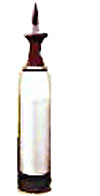 |
|
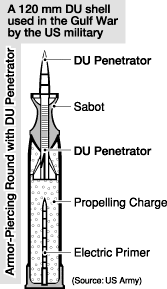 |
 Dan Fahey (31, photo, based in Washington,
DC) of the Military Toxicity Project, a civilian
watchdog group investigating the environmental
and health impacts of the use and dismantling
of US weapons, studied material obtained
through the Freedom of Information Act and
announced in March 1998 that, "About
400 thousand soldiers may have been exposed
to depleted uranium."
Dan Fahey (31, photo, based in Washington,
DC) of the Military Toxicity Project, a civilian
watchdog group investigating the environmental
and health impacts of the use and dismantling
of US weapons, studied material obtained
through the Freedom of Information Act and
announced in March 1998 that, "About
400 thousand soldiers may have been exposed
to depleted uranium." The US Defense Department (Pentagon) attacked this estimate, claiming that his figures were utterly groundless. About eight months later, under pressure from the National Gulf War Resource Center (NGWRC) (head office: Washington, DC) created by Gulf War veterans, their families and allies, the Pentagon published a map of the areas in which DU shells were used. At that point, they admitted that about 436 thousand ground soldiers had entered areas where DU munitions were used in Kuwait and Iraq.
The hazards of DU were known before the Gulf War.
A military report in 1974 evaluating the medical and environmental effects of depleted uranium noted, "In combat situations involving the widespread use of DU munitions, the potential for inhalation, ingestion, or implantation of DU compounds may be locally significant."Another report issued in July 1990 by the Science Applications International Corporation (SAIC), a company under contract to the military, identified the hazards even more clearly. Because depleted uranium is "a low-level alpha radiation emitter" it could be "linked to cancer when exposures are internal." It further warned, "Aerosol DU exposures to soldiers on the battlefield could be significant, with potential radiological and toxicological effects."
Thus, the Pentagon knew the dangers of DU well in advance, yet did nothing to inform or educate its soldiers about that danger and took no protective measures.
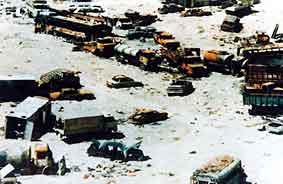 |
| Highway of Death: Destroyed Iraqi tanks, trucks and cars lie
everywhere. This road runs from Kuwait to
Safwan at the Iraqi border and on to Basra.
The American soldiers called it the "Highway
of Death." (Courtesy of Cassandra Garner,
taken March 1991 in southern Iraq) Click to view larger picture (51K) |
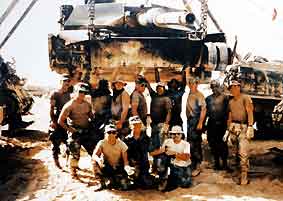 |
| No Protective Equipment: These US soldiers are preparing to ship
home US tanks destroyed by friendly DU fire.
Here they are taking no measures whatsoever
to protect themselves from radioactive contamination.
All undoubtedly inhaled or ingested DU particles.
(Courtesy of Douglas Rokke, taken May 1991,
in Saudi Arabia) Click to view larger picture (49K) |
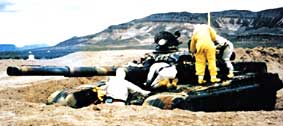 |
| Investigation: These US soldiers are investigating radioactive
contamination and potential protective measures
after firing DU shells at this Iraqi tank
brought to the US as a "spoil of war."
They are wearing protective clothing and
masks to prevent contamination. (Courtesy
of Douglas Rokke, taken June 1995, at the
nuclear test site in Nevada) Click to view larger picture (40K) |
This attitude cost thousands of young men and women in their twenties and thirties their health and even their lives long after the war.
| Other Factors |
DU munitions were not the only source of
the health problems that emerged after the
Gulf War. Many soldiers were given medicines
never approved by the Food and Drug Administration
(FDA). They were exposed to intense smoke
pollution from oil field fires, post-war
destruction of Iraqi chemical weapons storehouses,
and various toxic substances released during
the war. Thus, numerous factors may be involved.
Among the medicines the soldiers took under
orders from their officers was an antidote
to biological weapons called pyrisdostigmine
bromide (PB). They also received a vaccine
against botulinum and a drug to protect
against anthrax. According to an investigation
by the NGWRC, 250 thousand troops took PB,
8,000 received botulinum vaccinations, and
150 thousand took the anthrax medicine.
| A total of 696 thousand American soldiers took part in the Gulf War from August 2, 1990, when Iraq invaded Kuwait, until July 31, 1991, when the last of the soldiers came home after shipping home American tanks destroyed by friendly DU fire. Of these, 579 thousand had left the military and 117 thousand remained enlisted as of July 1999. |
| The Persian Gulf War On August 2, 1990, Iraq invaded and conquered neighboring Kuwait, triggering the Gulf War. Iraq's leader, Saddam Hussein, insists that Kuwait, one of the world's major oil producing countries, is actually Iraqi territory. Taking the move as a grab for oil fields and a more dominant role among the Arab states, the US and other Western nations reacted ferociously. US President Bush, obtaining assent from the former Soviet Union and China, created a multinational force of troops from 28 nations endorsed by the UN and led by the US. Air attacks began on January 17, 1991, the ground war on February 24. With an overwhelming show of power, the multinational force freed Kuwait on the 26th. The fighting ended on the 28th. On March 3, Iraq accepted and signed a cease-fire designed by the UN Security Council. That cease-fire agreement prohibited Iraq from researching, developing, or possessing nuclear weapons, and required it to accept a survey team from the International Atomic Energy Agency (IAEA). |